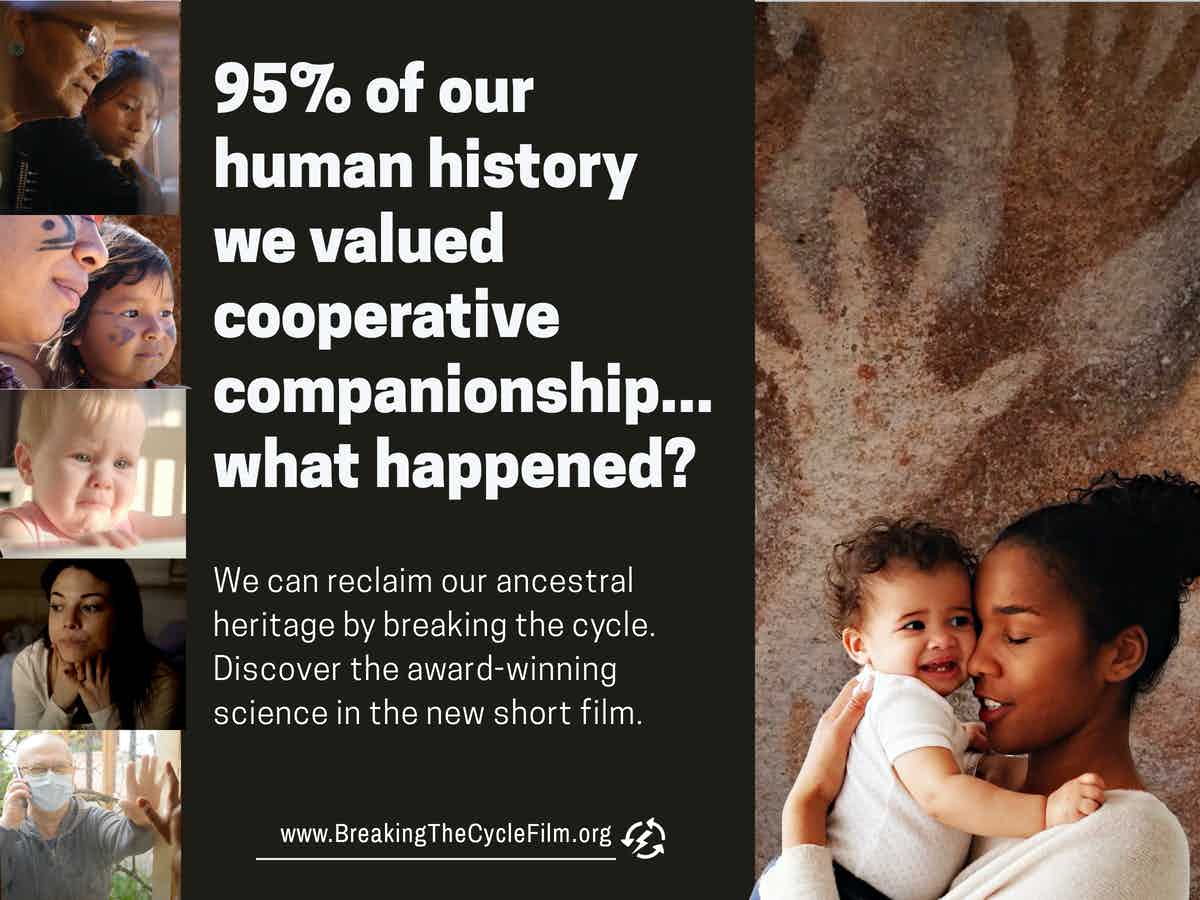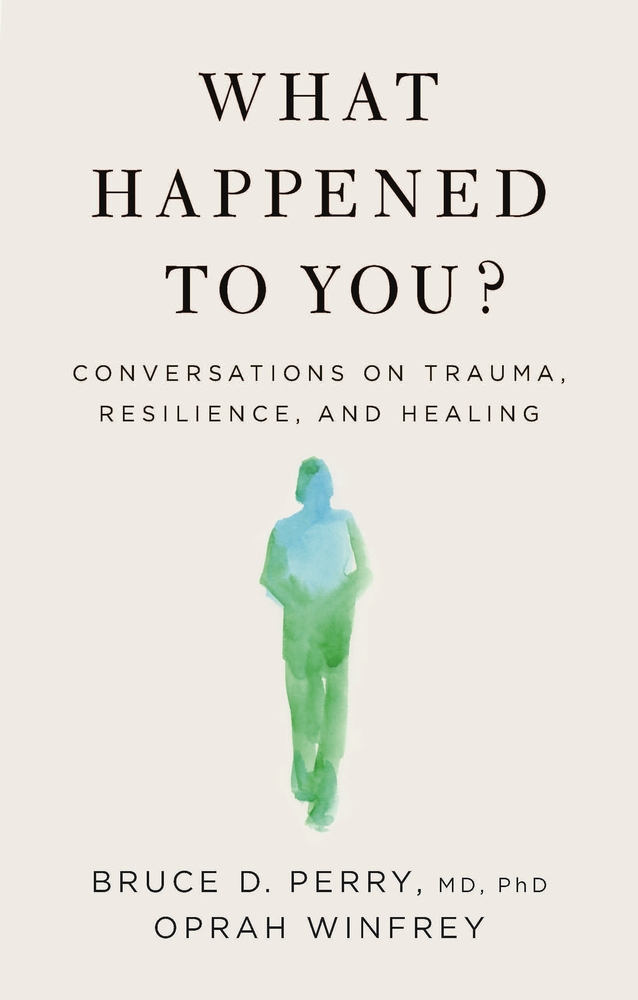Wellness-Informed Practice Asks, “What Does The Community Need to Remember?”
“A wellness-informed pathway requires understanding and knowing how to fulfill humanity’s basic needs. This is ancient knowledge that helped our ancestors adapt. For young children, the evolved nest meets all needs.“
KEY POINTS
- Stress can undermine developmentally appropriate care for babies and children, sometimes leading to traumatic experiences.
- Developmentally appropriate care helps children learn to self-regulate, then cooperate with others, and then use reason to guide behavior.
- Trauma-informed therapy identifies strategies to build self-regulation.
Healthy child development involves regulation, relationships, and reason.
Bruce Perry and Oprah Winfrey have published a book of their conversations about trauma and healing titled What Happened to You? Conversations on Trauma, Resilience, and Healing. Oprah has spoken to thousands of traumatized people about their experiences and Dr. Perry has worked to heal thousands.
The book provides excellent insights into the brain effects of trauma, and trauma-informed practices. There are several key points that can assist anyone who works with traumatized people.
- Developmental trauma is widespread these days. The stresses on mothers and families undermine developmentally appropriate responsive care for babies, young children, and children generally.
- Too often, adults do not understand how a child’s “acting out” is trauma related and use force, restraint, or isolation that further traumatizes the child.
- Developmentally appropriate care builds the brain’s capacities from the bottom up, first to self-regulate, then to relate cooperatively with others, and then to use reason to guide behavior.
- Developmentally inappropriate experience often results in a child being emotionally stuck at an earlier stage of development. Often, “troubled” children are unable to self-regulate, which impairs the development of relational and reasoning capacities. The inability to self-regulate is a signal of either trauma or the lack of developmentally appropriate experiences during sensitive periods when the brain was self-organizing regulatory capacities.
- Self-regulation involves multiple brain-body systems, such as neuroendocrine (e.g., oxytocin), stress response, habit formation, and the immune system.
- A child is further traumatized and delayed when adults who have children or work with children become dysregulated when a child acts “out of line.”
- Unaddressed developmental trauma can travel across family generations. Therapy to heal a “troubled” child should include their caregivers, who also need healing.
- A trauma-informed, brain-aware approach to others is to change the question when someone acts “out of line.” Instead of saying to others “what’s wrong with you?” the better question may be “what happened to you?”
- Trauma-informed therapy such as Dr. Perry’s Neurosequential Model of Therapeutics discerns which experiences are needed to build self-regulation. It often takes years of close a relationship and specific techniques, as Bruce Perry and his colleagues have demonstrated.
Perry’s version of trauma-informed practice alerts us to the fact that we all need to self-regulate throughout life. Typically for our species, we do so by expressing our feelings and thoughts to others who listen and even offer helpful touch. Adults typically regulate by relating to others. It is easy to get caught up in distress when communication with others is not available, such as during a pandemic.
Wellness Promotion Differs from Trauma-Informed Practice
Trauma-informed practice is vital for healing a wounded person through attentiveness to their treatment by organizational culture and practices. For wellness-informed practice, trauma is not considered “normal” for human beings, but is understood to become normalized in life-disrespecting systems. If trauma-informed practice is not accompanied by changes toward wellness-informed practice, it does not address the causes of the trauma. It just offers prosthetics. The damaging system often remains in place to traumatize or retraumatize more people.
Whereas trauma-informed practice addresses brain-development gaps to facilitate adequate functioning, it does not lead to thriving. Thriving requires having had no experience of trauma or undercare in childhood (Gleason & Narvaez, 2019). To avoid traumatizing children, adults need to understand how to support wellness in children.
Wellness-Informed Practice Asks, “What Does the Community Need to Remember?”

Wellness-informed practice addresses causes by providing baselines for species-normal development and functioning. Wellness promotion is the default baseline for how to live. Wellness-informed practice is brain aware, development aware and evolution aware.
Although Bruce Perry hinted in the book that humans have always been exposed to developmental trauma, this is not the case. Homo sapiens have been around for about two million years (genus homo for about six million years). Even during the chimpanzee-like domination by alpha males, which ended perhaps one million years ago (Burkart, Hrdy, & Van Schaik, 2009), our social mammalian developmental system was in place. Species-typical child raising in 95% of our human species history was wellness-informed.
Childhoods in 95% of our species history as nomadic foragers were enveloped in evolved nest provision (Hewlett & Lamb, 2005; Hrdy, 2009; Narvaez, 2014). The Evolved Nest offers the ecological support for balanced development, initially helping the young child return to homeostasis which promotes growth and, at the same time, educates the child’s systems to learn self-regulation, restoring homeostasis.
Wellness-informed practice through the evolved nest is part of humanity’s heritage from our sustainable ancestors through the tree of life. Most nest practices are over 70 million years old, emerging with social mammals. The nest is rooted in the maternal gift economy where children’s basic needs are met without a need for reciprocity (Vaughan, 2019). Such gifting is especially important for young children. Children are given what they need without question or resentment. The gift economy was a lifelong experience. Sharing is a cultural value so that all eat, all are cared for.
Challenging the Trauma-Inducing System, Institutions, Practices, Policies
Too often in the modern world, institutions and practitioners settle for outcomes where the aim is a functioning individual, one who is no longer a problem to society through criminality or sloth. It is expected that the functioning individual is able to conform to the workplace work or family, whatever the quality of life available to them. But to look away from the systems that brought about the trauma is to condone them and continue to perpetuate trauma in others.
Wellness-informed practice does not settle, does not condone. It works to change minds and hearts, policies and practices toward the support of human thriving. The aim of wellness-informed and wellness-guided practices means avoiding culturally- or familial-induced trauma to begin with. This is the way sustainable foraging societies lived. The nest’s fullest provision is offered by peaceable societies (Montagu, 1978; Prescott, 1996; Turnbull, 1974).
A wellness-informed pathway requires understanding and knowing how to fulfill humanity’s basic needs. This is ancient knowledge that helped our ancestors adapt. For young children, the evolved nest meets all needs.
Resources
Learn more about the Evolved Nest at www.EvolvedNest.org
Read about the Evolved Nest on Kindred.
See the Evolved Nest’s new short film, Breaking the Cycle, and find a film guide and resources to share.
References
Barfield, S., Dobson, C., Gaskill, R., & Perry, B. D. (2012). Neurosequential model of therapeutics in a therapeutic preschool: Implications for work with children with complex neuropsychiatric problems. International Journal of Play Therapy, 21(1), 30–44. https://doi.org/10.1037/a0025955
Burkart, J.M., Hrdy, S.B. and Van Schaik, C.P. (2009). Cooperative breeding and human cognitive evolution. Evolutionary Anthropology, 18, 175-186. https://doi.org/10.1002/evan.20222
deCandia, C. & Guarino, K. (2015). Trauma-informed care: An ecological response. Journal of Child and Youth Care Work, January, 7-13. Downloaded on May 8, 2021 from: https://www.air.org/resource/trauma-informed-care-ecological-response
Gleason, T., & Narvaez, D. (2019). Beyond resilience to thriving: Optimizing child wellbeing. International Journal of Wellbeing, 9(4), 60-79. DOI: http://dx.doi.org/10.5502/ijw.v9i4.987
Hewlett, B.S., & Lamb, M.E. (2005). Hunter-gatherer childhoods: evolutionary, developmental and cultural perspectives. New Brunswick, NJ: Aldine.
Montagu, A. (Ed.). (1978). Learning non-aggression: The experience of non-literate societies. New York: Oxford University Press.
Narvaez, D. (2014). Neurobiology and the development of human morality: Evolution, culture and wisdom. New York: Norton.
Perry, B.D. (2009) Examining Child Maltreatment Through a Neurodevelopmental Lens: Clinical Applications of the Neurosequential Model of Therapeutics, Journal of Loss and Trauma, 14:4, 240-255, DOI: 10.1080/15325020903004350
Perry, B. D. (2006). Applying Principles of Neurodevelopment to Clinical Work with Maltreated and Traumatized Children: The Neurosequential Model of Therapeutics. In N. B. Webb (Ed.), Social Work Practice with Children and Families. Working with traumatized youth in child welfare (p. 27–52). The Guilford Press.
Perry, B.D., & Winfrey, O. (2021). What Happened to You? Conversations on Trauma, Resilience, and Healing. New York: Flatiron.
Prescott J.W. (1996). The origins of human love and violence. Pre- and Perinatal Psychology Journal, 10 (3), 143-188.
Turnbull, C. (1984). The human cycle. New York: Simon and Schuster.
Vaughan, G. (2019). The maternal roots of the gift economy. Toronto: Ianna.



